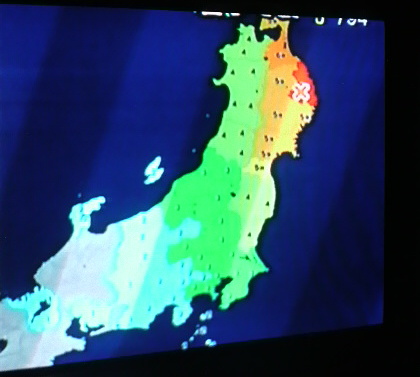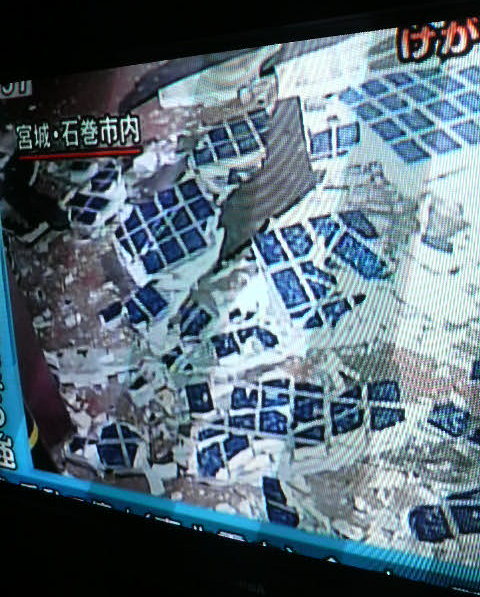Thailand was the first foreign country I ever visited, when I was just 19 years-old. I don't believe I will feel culture shock as cutting or as cool as that ever again, unless I manage to travel to an alien planet, or at least to sub-Saharan Africa!
It was late 1992, and I was en route to the Middle East with my man Garnet Mae. We had a couple of days to kill in Bangkok, awaiting our Turkish Airlines connection. Arriving in the dead of night at the city's old Don Mueang International Airport (ท่าอากาศยานดอนเมือง), we decided to proceed to the Khao San Road guesthouse area, with a mad Englishman and Irishman to split the taxi fare.
It was my first night in Asia, and everything about the place amazed me.
The heat, the nonchalance with which the taxi driver careered us through the traffic, the lack of functioning seatbelts. The humidity, whole families hanging out of the back of pickup trucks (they may well have been SpaceCabs, or at least some precursor to the SpaceCab invasion.)
Throngs of people on the streets, despite the fact it was nearly midnight. Gridlock and pandemonium, and what made it even more surreal, was that the taxi we rode inside was an exact replica of my Dad's blue Holden Commodore (I later discovered that they were both Golf rip-offs.)
That said, my Dad never gunned his Commodore down the wrong side of the road the way our Thai taxi driver did that night, cursing his fellow motorists. I hung on to the roofstrap for dear life as we shuttled through ever shabbier and more colorful districts, into the Old City. Trees were wrapped with strings of blinking lights, while behind them, vast billboards rose advertising Japanese and American firms. We were all convinced that the taxi driver was going to rip us off. When he finally pulled up on the kerb and announced that we had arrived at Khao San Road, none of us believed him.
Getting out of the car, I was startled to see some Thai police leading a shirtless guy past us, bound by handcuffs and covered with tattoos.
And I thought to myself: What kind of country is this?
I did not know it at the time, but at the head of Khao San Road there stands a massive (and apparently historic) police station. Anyway, after spending nearly 8 years in Asia now, guys in handcuffs no longer alarm me. I have even worn them myself on the odd occasion, and played the role of the scary criminal on the great stage of life.
I have loosened up, and Khao San Road no longer scares me.
But will it fascinate me again? that is the great question, as I await my next trip there, in just a couple of weeks. I am not a virgin anymore, sexually and travelwise, and I know that the first time is always means much more, than the 2nd or 3rd time around (let alone the 8th or 9th)... (For my evolving guide to Bangkok's Golden Mile and what you can find there, click here.)
Adsense Top Bar
Thursday, July 31, 2008
Thursday, July 24, 2008
Magnitude 6.8 Earthquake in Tohoku, Japan
It has been a hot summer so far here in Japan, and everyone has been walking around like a zombie, drained by the humidity. It has also been an active time seismically -- four earthquakes in the past week, two of them strong enough to alert me, and to startle me. I have had some shocking migraines and headaches in the past couple days, and at first I attributed them to the heat and my badly designed counterfeit North Face backpack, and a dose of the strong summer sun. I know from my experience that prolonged exposure to the tropics can be enough to trigger a migraine, that is what happened to me once, waiting to meet some girls outside Saigon's Bến Thành Market in March 2007. I have also come to expect the odd headache and neck and back pain from wearing my rip off rucksack, which I bought from the very same marketplace in Vietnam, later that year. Nonetheless, just after midnight last night my new supposedly earthquake proof house started trembling and surfing on its foundations, and I thought to myself: could those migraines have been linked to the earth? Was there a correlation between the pent up pressure in the north and eastern coasts of Honshu, and the pent up pressure in my head? Interestingly, when I woke up this morning, most of my migraine was gone. It was still plenty hot outside, but Japan's seismic frustration had been vented, dissipated into shakes. At least for now. It will only be a matter of time before it gets built up again.
There was an earthquake last night although I wasn't quite sure at first if it was really an earthquake, or dizziness associated with my recent bout of migraine headaches. I had to look up to the little Vietnamese windchime I picked up in the middle of a deluge in Đà Lạt to make sure, and sure enough, it was indeed jerking about even though there was no wind in my apartment. I jumped up and edged half way outside the back door a step or two from my computer, which opens on to a huge car park which I figure could make a good refuge if the Big One ever strikes. I pretty much knew right from the start though, that this wasn't the Big One. Big earthquakes start big and there is a kind of mathematical relationship between the size of the peak of the shake, and the intensity of the onset. Since this earthquake had started light, I figured it wasn't going to be anything more than a 3 (on the Japanese magnitude scale.) Nonetheless, it was scary as all earthquakes are scary and I had to tell myself to relax, to chill out, to even enjoy it in a kind of Stormchaser from the Discovery Channel vibe. This, after all, was my encounter with nature, and an expedition into the realm of unusual phenomena. Japan wouldn't exist, it it wasn't for the collision of the plates. According to some theorists, life on earth wouldn't exist either, if it wasn't for plate tectonics. I leaned back on the doorframe with half my body inside and half my body perched a foot above the grass outside, and was struck by how quiet it was out here, here in the outer suburbs of Tokyo. The frame throbbed gently against my back, like an electric current running through the house, and I understood at that moment that earthquakes were waves, the energy passing through the ground the same way a wave rolls through the water. The shuddering went on for quite some time, sometimes subsiding, sometimes fevering up a notch -- all in all a minute by my reckoning (although it seemed much longer than that.) When it became clear it was over, I switched on the TV to see they were already reporting on it. Panels of earthquake experts were assembling, providing instant analysis. Footage from a couple of security cameras was already on the air. How could they get it together so fast? The media in Japan are on their game, that's for sure. They showed this map of the magnitudes on TV, using the Japanese earthquake shaking scale, color coded. The Japanese have their own earthquake rating system, which is different from the Richter scale. While the Richter scale measures the energy released from a quake, the Japanese system (in a typically subjective, Asian way) measures the level of shaking in any particular place. So the further out from the epicenter you get, the lower the magnitude will be, using the Japanese system.
This map of Honshu Island shows the epicenter (X marks the spot.) The epicenter was in the Iwate Prefecture of the Tohoku (East North region of Honshu), which suffered some damage and injuries but no fatalities, as far as I know so far. On TV there were scenes of bags of crisps and snacks spilt in convenience stores, broken tiles, a broken grave or two. Apart from danger the red zone on this map signifies a "strong magnitude 6". It should be noted, that 7 is as high as you can go on the Japanese Richter scale, so a strong 6 is pretty bad. As far as I know, 6 is supposed to represent shaking and swaying so severe that you can't stand up, and your home or building could fall down. Radiating out from the epicenter, the orange zones represent weak 6 and magnitude 5 shaking, the green zones are 4's and 3's, while the blues and whites signify miniscule 2's and 1's. Folks in those zones probably didn't even notice the quake (unless they were earthquake sensitive.) When my apartment started shuddering and pulsing in Tokyo last night, I correctly guessed I was experiencing a magnitude 3 quake (on the Japanese scale.) I have faced down plenty of 3's over the past seven years, and in some way, gotten used to them. The heaviest I have experienced is a magnitude 4, back in July 2005. That was strong enough for me and I can't imagine what a magnitude 6 quake would be like. It was worth noting that tonight's quake was merely an aftershock of the temblor which killed a number of folk in the East North region a month ago.
As Japan Probe reported:
 |
| There were 60+ people injured in this morning's earthquake, according to an IBC News report. |
 |
| X marks the spot: the epicenter of the earthquake, in Iwate Prefecture, Tohoku region of Japan. |
As Japan Probe reported:
A little over a month has passed since a strong earthquake hit Iwate Prefecture, and the area has been hit with another quake.
A strong earthquake jolted northern Japan early on Thursday, injuring at least 76 people, trapping hundreds in halted trains and temporarily cutting off electric power to thousands of homes.
The Japan Meteorological Agency (JMA) said there was no threat of a tsunami from the quake, which struck at 00:26 a.m. Thursday (11:26 a.m. EDT Wednesday) and had a preliminary magnitude of 6.8 and could be felt as far away as Tokyo.
At the time of this posting, NTV news was reporting a total of 109 injured, but the figure may increase as more information becomes available...Here is a shot of those broken tiles.
 |
| Earthquake damage, in Tohoku. |
Subscribe to:
Posts (Atom)
